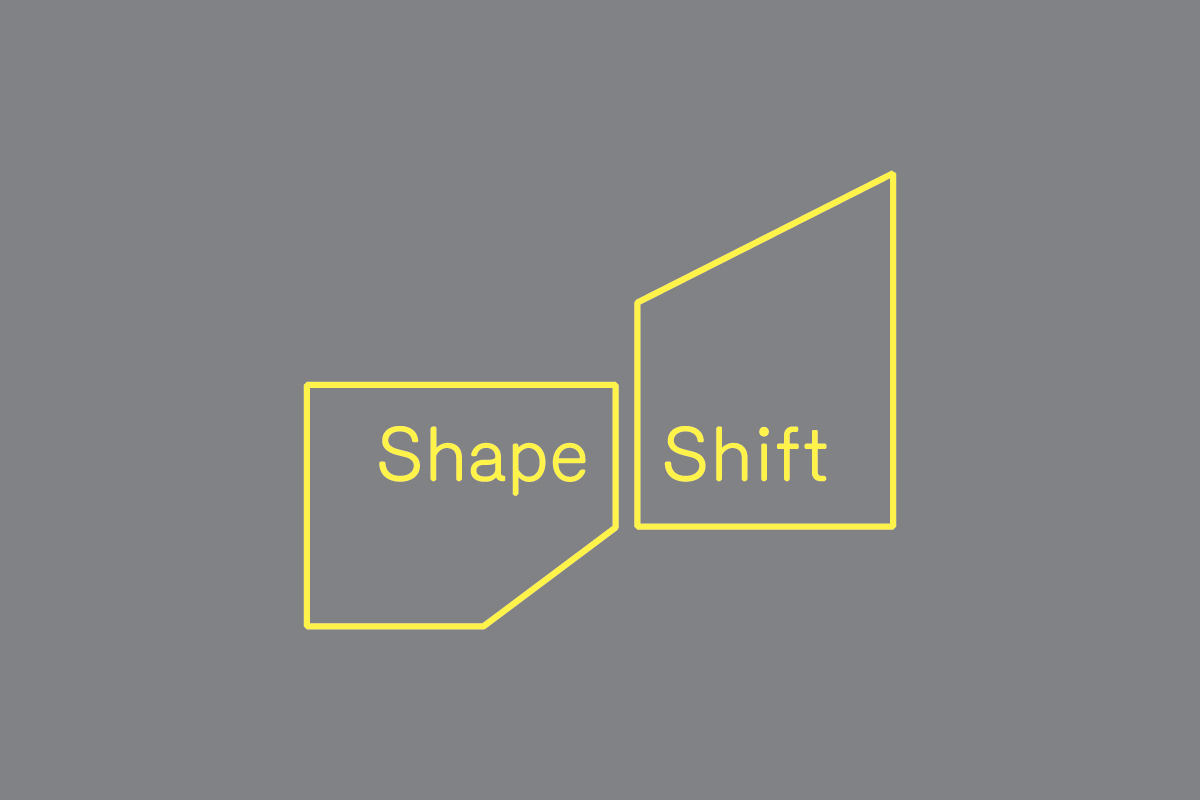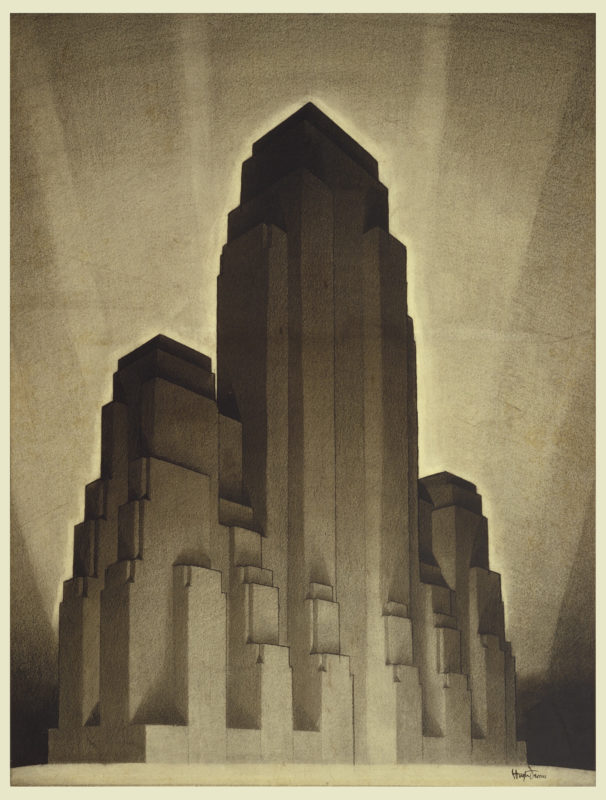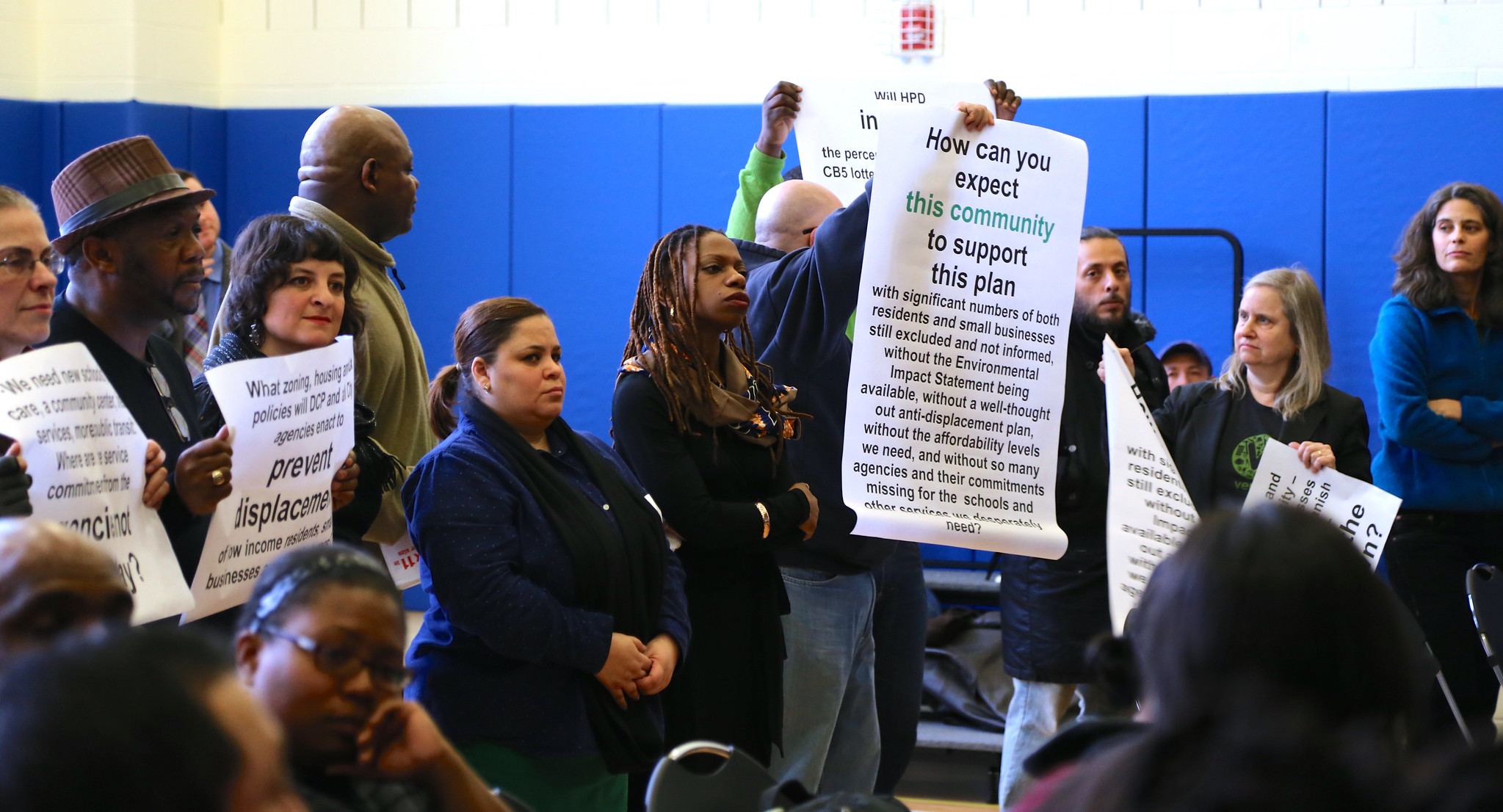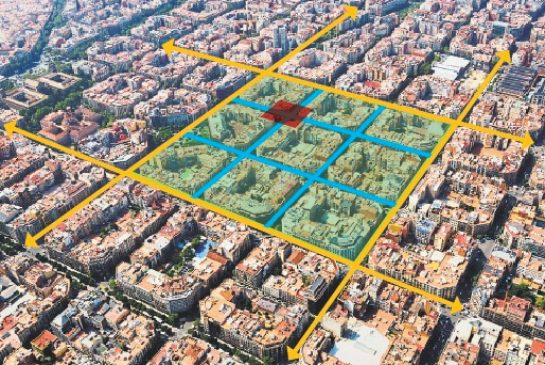
Our next mayor must transform New York City’s approach to urban design to achieve housing equity, economic justice, and environmental health.
The most critical challenges facing our city today are expressed in the built environment. Central neighborhoods benefit from New York City’s prosperity and its diversifying economy, world-class parks, and rebuilt streetscapes; while others suffer from housing precarity, declining transit, and poor public health.
With our upcoming mayoral election, we have an opportunity to define a new progressive vision for our city.

Drawing, Study for Maximum Mass Permitted by the 1916 New York Zoning Law, Stage 4, 1922.
Photo: Cooper Hewitt, Smithsonian Museum.
Our planning process is a balancing act between the City Planning Commission, Community Boards, Borough Presidents, and City Council, with limited community participation. As-of-right development keeps construction cranes rising citywide, but strains aging infrastructure without an overall vision. Neighborhood rezonings usher in new homes, workplaces, and infrastructure in historically disinvested communities, but threaten displacement for the most vulnerable New Yorkers.
The city’s recent approach to the built environment has not been able to end homelessness, create quality jobs, fix public transit, or protect coastlines across the five boroughs. Over the course of our city’s history, government has responded to similar crises by overhauling the zoning code to improve quality of life, rewriting the City Charter to welcome community input, and reshuffling key agencies to oversee long-term plans. New York City’s next mayor will need a radical, long-term urban vision to address these injustices.
In our 2019-20 program, Shape Shift, we welcome you to share your vision for the built environment under the next mayor. This fall, we will revisit the historic planning shifts that have shaped our city today. Early next year, we will survey international cities pioneering social housing programs, economic regeneration strategies, and public realm revamps. And next spring, we will lead debates on alternative approaches to the present state of planning.
Collectively we will develop a platform of transformative ideas to share with the 2021 mayoral candidates.
How should the next mayor shape the built environment to build a more equitable city?

East New York Community Workshop, hosted by NYC Dept of Planning.
Photo: NYC Dept. of Transportation.
Key Questions to Consider ↓
This year, we invite our Fellows to redefine progressive planning in New York City and draft an electoral platform for the next mayor. Ideas should relate to the following questions:
Community Engagement: How can we empower residents to have a more meaningful voice in the future of their neighborhoods and other citywide development projects?
Development Benefits: How might new development more broadly benefit the public using strategies like community benefits agreements, neighborhood development funds, and air rights transfers?
Racial Justice: How should we restructure rezonings to invest in neighborhoods that have experienced racist planning policies without driving displacement?
Design Quality: What level of public review is needed to support quality design of infrastructure and the public realm?
Fair Share: How can city policy support a more equitable distribution of amenities and infrastructure in every neighborhood?
Right to Housing: How can we provide homes for very low-income and homeless New Yorkers through innovative design, creative financing, and alternative ownership?
Climate Strategy: How can we deploy urban design, green infrastructure, and community organizing to address climate risk in low-income communities?
Working Neighborhoods: How should the City create thriving job centers in each of the five boroughs using anchor institutions, tax incentives, and creative zoning?

The 1938 Home Owners’ Loan Corporation map of Brooklyn. Credit: National Archives and Records Administration, Mapping Inequality.
Program Design ↓
 History & Context
History & Context
We will reflect on the history of citywide planning, including the creation of zoning resolutions, the practices of redlining and race-based planning, and efforts to increase democratic participation in the planning process.
 Global Case Studies
Global Case Studies
We will convene planning directors and prominent public officials from cities with radically different models for comprehensive planning, urban design and community development.
 New York City Precinct Studies
New York City Precinct Studies
We will revisit significant neighborhood rezonings over the last two decades to consider their aims and outcomes. Our goal will be to strategize new methods for future neighborhood investments.
 Current Debates
Current Debates
We will debate the most intractable issues in planning today, such as how to gather meaningful community insights, how to use development to deliver public benefit, or how to improve the public review process.
 Mayoral Plaftorm
Mayoral Plaftorm
We will collect your ideas as a menu of courageous strategies for the mayoral candidates to consider, and identify creative channels to distribute those ideas to the broader public.

The Poblenou Superblock.
Photo: Suitelife.
How to Contribute ↓
1. Submit an Idea
Submit a transformative design, policy, or financing idea that could serve as a model for progressive design and development.
2. Propose a Debate
Submit a polarizing topic for a debate on urban planning, design, and development in New York City today.
3. Nominate an International Speaker
Introduce us to developers, architects, planners, or advocates from other cities to foster comparative dialogue on city building.
4. Lead a Tour
Share a project that could serve as a case study for new planning or zoning models.
5. Model an Alternative
Create illustrations, data visualizations, and digital mapping tools to communicate alternative visions to our members.
6. Host Us
Open your organization’s space to host a debate or conversation series for 50-100 people during our series.
We welcome a diverse range of submissions, including text, diagrams, maps and videos. Your contributions will form the basis of our program and inform us about potential ideas to showcase, ongoing initiatives to study, and rising leaders to invite.
Text-based submissions can be as concise as a tweet (140 characters), or as long as a cover story (10,000 words). Visual submissions can take the form of a napkin sketch, an illustrated case study, or a digital map. Video submissions can take the form of a building snapshot, neighborhood tour, or interview.
Our submissions deadline is August 28, 2019 at 6:00pm.
Please direct all submissions and questions to:
Guillermo Gomez
Program Associate
646-928-0558
guillermo@urbandesignforum.org